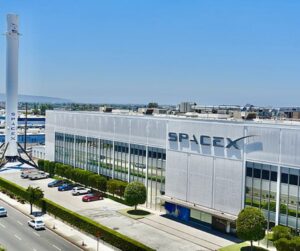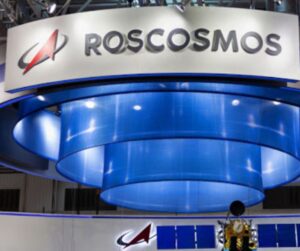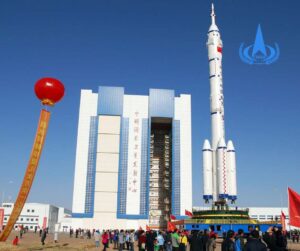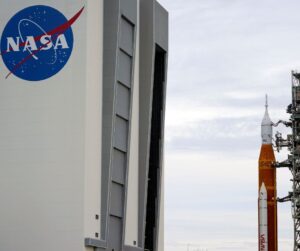9. German Aerospace Center (DLR)

Founded in 1954, the German Aerospace Center (DLR) is a powerhouse in research and development, working in diverse fields like space, transportation, and aeronautics. They play a crucial role in pushing the boundaries of technology through their involvement in various cutting-edge projects.
Some of DLR’s notable contributions include:
- Mars Express: Contributing instruments and expertise to this European Space Agency mission studying the Martian environment.
- Galileo navigation system: Partnering with the European Union on this global navigation satellite system, offering high-precision positioning and timing services.
DLR’s future is filled with exciting endeavors:
- They continue to play a significant role in international space exploration missions and research.
- Their focus on sustainable transportation and energy solutions promises advancements in areas like electric vehicles and renewable energy.
With an annual budget of around €4.2 billion, DLR remains a driving force in scientific and technological progress, shaping the future of Earth and beyond.
8. National Centre for Space Studies (France)

Founded in 1961, the Centre National d’Études Spatiales (CNES) stands as France’s leading force in space exploration. CNES navigates the cosmos through:
Some of CNES’s notable contributions include:
- Global Teamwork: Collaborating on impactful missions like Megha-Tropiques, a joint effort with Germany to study the tropical water cycle and its link to climate change. CNES’s collaborative spirit extends to partnerships with ESA and other agencies, amplifying their reach and impact.
- Independent Innovation: Spearheading ambitious projects like developing a methane-powered reusable launch vehicle. This groundbreaking technology promises a cleaner future for spaceflight, showcasing CNES’s commitment to sustainability and environmental responsibility.
Paving the Way for Tomorrow:
CNES’s vision extends beyond the present, with a future brimming with exciting endeavors:
- Reaching for the Red Planet: Playing a key role in the ExoMars program, aiming to search for signs of past life on Mars.
- Unveiling the Universe’s Secrets: Contributing to missions like the James Webb Space Telescope, peering deeper into the cosmos than ever before.
With an annual budget of approximately €2.7 billion, CNES continues to be a major player in the global space arena, pushing the boundaries of knowledge and technology while fostering international cooperation.
7. Space Exploration Technologies Corporation (SpaceX)

Founded in 2002 by Elon Musk, SpaceX is a private aerospace manufacturer and space transportation services company with a bold vision: making humanity a multi-planetary species. They’re known for their innovative approach to spaceflight, focusing on cost-effective solutions and reusability.
Notable Contributions:
- Reusable Rockets: Pioneering partially reusable Falcon 9 and Falcon Heavy rockets, slashing launch costs and revolutionizing the industry.
- Satellite Launch Leader: Setting a record with 143 Starlink satellites launched in a single mission, building a global internet constellation.
- First Commercial Crew Flight: Completing the first crewed commercial flight to the International Space Station in 2020, marking a historic milestone.
Future Endeavors:
- Starship Takes Flight: Developing Starship, a fully reusable launch system designed for Mars colonization and deep space exploration.
- Starlink Expands: Building a comprehensive Starlink internet constellation, providing global internet access and bridging the digital divide.
- Beyond Earth: Aiming for crewed missions to Mars in the near future, laying the groundwork for a multi-planetary future.
With their ongoing development of Starship, a fully reusable launch system, and Starlink internet constellation, SpaceX continues to push the boundaries of space exploration and pave the way for a future where space travel is more accessible and affordable.
6. Japan Aerospace Exploration Agency (JAXA)

Founded in 2003, the Japan Aerospace Exploration Agency (JAXA) has carved its niche in the world of space exploration.
Notable Contributions:
- Asteroid Explorers: The Hayabusa missions, retrieving the first samples from an asteroid and revolutionizing our understanding of these celestial bodies.
- Human Spaceflight Pioneers: Leading the way in Asian space exploration with ongoing astronaut missions to the International Space Station and ambitions for future lunar and deep-space exploration.
- Technological Trailblazers: Developing reusable launch vehicles like the H3 rocket, aiming for cost-effective and sustainable space access.
- Scientific Discoveries: Contributing to various missions across the solar system, like BepiColombo to Mercury and the Exospheric Platform TELESCOPE (ExPT) for space weather observations.
Future Projects:
- Lunar Ambitions: Aiming to send a Japanese astronaut to the lunar surface by 2030 and establishing a sustainable lunar base in the future.
- Martian Dreams: Collaborating on international Mars missions and planning robotic sample return missions for the future.
- Space Debris Solutions: Developing technologies to tackle the growing issue of space debris, ensuring the long-term sustainability of space exploration.
- Space Exploration for All: Fostering public engagement and education through initiatives like astronaut selection programs and outreach activities.
With an annual budget of around $2.3 billion, JAXA continues to play a crucial role in advancing space exploration, pushing the boundaries of technology and scientific understanding.
5. European Space Agency (ESA)

Founded in 1964 by 22 European countries, the European Space Agency (ESA) is a powerhouse in space exploration. They lead or participate in various scientific missions, pushing the boundaries of our knowledge about the universe.
Some of ESA’s most notable missions include:
- Venus Express: Studying the Venusian atmosphere and searching for signs of past habitability.
- Rosetta: Landing a probe on a comet, revealing its secrets and composition.
- Corot space telescope: Discovering thousands of exoplanets, planets outside our solar system.
Looking to the future, ESA has ambitious plans:
- Ariel Space Mission: Launching in 2029, Ariel will study the atmospheres of exoplanets, searching for potential signs of life.
- ClearSpace-1: This pioneering mission, slated for launch in 2025, aims to remove a piece of space debris from orbit, demonstrating a crucial technology for tackling the growing problem of space junk.
With an annual budget of €7.43 billion, ESA continues to play a vital role in international space exploration, making significant contributions to scientific research and technological advancements.
4. Russian Federal Space Agency (RFSA)

Formally known as the State Space Corporation ROSCOSMOS, but often called Roscosmos, this agency carries the torch of Russia’s illustrious space legacy, dating back to 1957 with the launch of the first artificial satellite, Sputnik-1.
Notable Contributions:
- Development of the Soyuz launch vehicle and spacecraft: Renowned for its reliability and versatility, Soyuz has been instrumental in transporting astronauts and cargo to the International Space Station (ISS) for decades.
- Participation in the ISS program: Roscosmos has been a key partner in the construction and operation of the ISS, contributing modules like Zarya and Zvezda, and providing crucial crew transportation.
- ExoMars mission: This ongoing endeavor seeks to answer the fundamental question of life on Mars through robotic exploration, pushing the boundaries of astrobiology.
Future Projects:
- Unveiling Martian secrets: ExoMars rover mission continues its search for biosignatures on Mars, while Luna-Glob program aims for lunar surface exploration.
- Deep space ventures: Venera-D mission will study the Venusian atmosphere, contributing to our understanding of this enigmatic planet.
- Maintaining spacefaring prowess: Continued development of next-generation launch vehicles and spacecraft ensures Roscosmos remains a major player in space exploration.
With an annual budget of approximately $5.4 billion, Roscosmos remains a major player in space exploration.
3. China National Space Administration (CNSA)

Established in 1958, CNSA has emerged as a global player in space exploration.
Notable Achievements:
- Lunar Landing Pioneer: While not the first, CNSA achieved a successful lunar landing in 2013 with Chang’e-3, showcasing their advanced capabilities and solidifying China’s place in lunar exploration.
- Station in the Sky: Launching the Tiangong-1 space station in 2011 marked a significant milestone, demonstrating China’s growing expertise in human spaceflight and long-term space habitation.
- Unveiling Mars’ Secrets: The Tianwen-1 mission successfully landed a rover on Mars in 2021, sending back valuable data and images, contributing to our understanding of the Red Planet.
- Beyond Earth: CNSA has launched numerous satellites for Earth observation, communication, and scientific research, expanding its reach and influence in the space domain.
Future Projects:
- Lunar Ambitions: CNSA aims to return to the Moon with Chang’e-4 and 5 missions, collecting lunar samples and potentially establishing a research station.
- Building a Space Station: The construction of the Tiangong space station is ongoing, paving the way for extended human missions and international collaboration.
- Reaching for the Stars: Future plans include missions to Mars, asteroid exploration, and deep space probes, solidifying China’s commitment to pushing the boundaries of space exploration.
With ambitious plans to capture images of Jupiter and Saturn, CNSA boasts an annual budget of $11.4 billion.
2. Indian Space Research Organisation (ISRO)

Building on a foundation established in 1962, ISRO, officially formed in 1969, has made significant strides in space exploration.
Notable Contributions:
- Cost-Effective Missions: Renowned for developing economical yet successful missions, pushing the boundaries of affordability in space exploration.
- Lunar Discoveries: Chandrayaan-1 lunar orbiter mission (2008) provided crucial evidence of water ice on the Moon, revolutionizing our understanding of its polar regions.
- Martian Triumph: Mangalyaan 1 Mars orbiter mission (2014) marked India’s historic achievement of reaching Mars on its first attempt, a remarkable feat for a maiden interplanetary mission.
- Satellite Powerhouse: Developed and launched numerous communication, Earth observation, and navigation satellites, significantly enhancing India’s technological infrastructure and data access.
- Chandrayaan-3: launch in 2023, this lunar mission successfully soft landing on the Moon’s surface, and explore its terrain and resources.
Future Projects:
- Gaganyaan Program: Aiming to send the first Indian astronauts to space by 2024, marking a monumental step in human spaceflight capabilities.
- Venus Mission: Planning an orbiter mission to Venus in the coming decade, furthering our understanding of this enigmatic planet and its extreme environment.
With an annual budget of $1.5 billion, ISRO continues to play a vital role in advancing India’s spacefaring ambitions.
1. National Aeronautics and Space Administration (NASA)

Established in 1958, NASA, based in the USA, stands as the forefront space agency globally. Renowned for groundbreaking achievements, NASA has explored distant planets like Jupiter and Saturn, showcasing its prowess with projects like the Hubble Space Telescope, Voyager missions, and the iconic Apollo moon landings.
Notable Contributions:
- Instrumental Powerhouse: Providing cutting-edge instruments for major missions like Mars Express and Venus Express, including the VIRTIS spectrometer for studying Venus’ atmosphere.
- Collaborative Spirit: Partnering closely with ESA, sharing expertise and resources to tackle ambitious missions beyond individual budgets, like JUICE (Jupiter icy moons explorer) and Ariel (exoplanet atmosphere telescope).
- Rocket Propulsion: Actively involved in developing the Ariane 5 launch vehicle alongside ESA, demonstrating commitment to international spacefaring advancements.
Future Endeavors:
- Unveiling Cosmic Mysteries: Participating in groundbreaking missions to expand our understanding of the universe, like JUICE and Ariel.
- Technological Trailblazer: Investing in cutting-edge technologies and fostering a thriving Italian space industry to secure the nation’s prominent position in global space exploration.
With an annual budget of $24.5 billion, NASA continues to be a beacon in space exploration.










